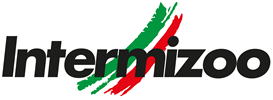What is Polling?
The poll gene causes the absence of horns. It is a qualitative trait of the bovine genome controlled entirely by genetics. Breeding polled cows can be of benefit to farmers by leading to easier management and reducing stock injuries.
The Genetics of Polling
Originally, wild cattle were horned. Polledness is a natural and very sporadic mutation that causes animals to not develop horns. The presence or absence of horns is controlled by genetics. There are two forms of the gene that define horn development: each animal has two copies of the gene, which are inherited from their parents. Calves receive one copy from their sire and one from their dam. The two forms of the gene are:
- P This form (allele) causes polling and it is dominant over the other form
- p This form (allele) causes horns and the it is recessive to the other form.
The genotype of the progeny is the resulting combination of the copies inherit from the dam and from the sire.
The phenotype is the physical appearance of the animal that can be observed.
The combination of these allele creates three possible genotypes, but only two phenotypes, which are horned or polled:

Conventionally, homozygous dominant bulls are indicated as PP or PS. Heterozygous bulls, which have only one dominant allele, are specified as Pp, PO, PC or P. Nowadays, animals can be identified by testing a DNA sample of hair.
Practical issues with selecting for Polling
Polling is a trait that many breeders are looking to select for many reasons. Moreover the public awareness about dehorning cattle has made it another hot button topic in the dairy industry.
In particular, the polled selection allows to avoid the dehorning of calves, leading great advantages in:
- Cost saving and time: The average dehorning cost varies from one farm to the next, based on the chosen method of dehorning. A case study of the University of Minnesota in 2017 showed that the dehorning cost is about 12-13$/calf. Therefore, the breeder can spend an additional amount of 6$/cow to purchase an heterozygous polled bull, up to 12$ for an homozygous polled bull.
- Reduce Stress caused at dehorning. The dehorning practice can reduce performance in the early stage of the calves. In the following two day after this practice, calves have no appetite due to the trauma. Moreover, in the European Countries dehorning is allowed only within the third week of life and in some Countries cauterisation is allowed only with anesthesia.
- Reduce risk to staff during handling of horned cattle and avoid injury to other cattle from horns.
Sources
- F. Canavesi, Selezionare per lassenza di corna. Ruminantia, 2-2016.
- Medugorac I, Seichter D, Graf A, et al., Bovine polledness–an autosomal dominant trait with allelic heterogeneity. PLoS One, 2012.
- R. Schafberg, H.H. Swalve, The history of breeding for polled cattle, Livestock Science (Vol. 179), 2015.
- B. Dorshorst, Half of Holstein heifer calves could be polled by 2034.
- Kathleen OKeefe, Polled Holsteins: Past, present and future, Progressive Dairyman, 10-2016.
- D.L.vo 146/2001 relativa alla protezione degli animali negli allevamenti.
- N. M. Thompson, N. Olynk Widmar, M. M. Schutz, J. B. Cole, C.A. Wolf, Economic considerations of breeding for polled dairy cows versus dehorning in the U.S., 2017.
- J. Krymowski, Is the future polled? The economic impacts of the alternative to dehorning, 2017.

